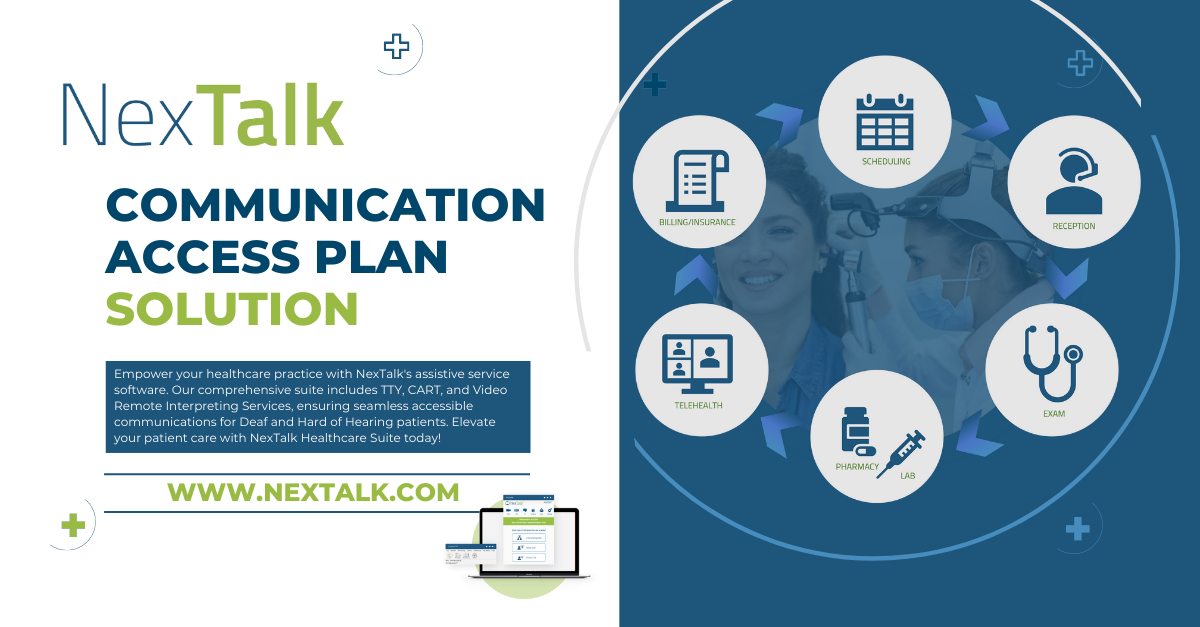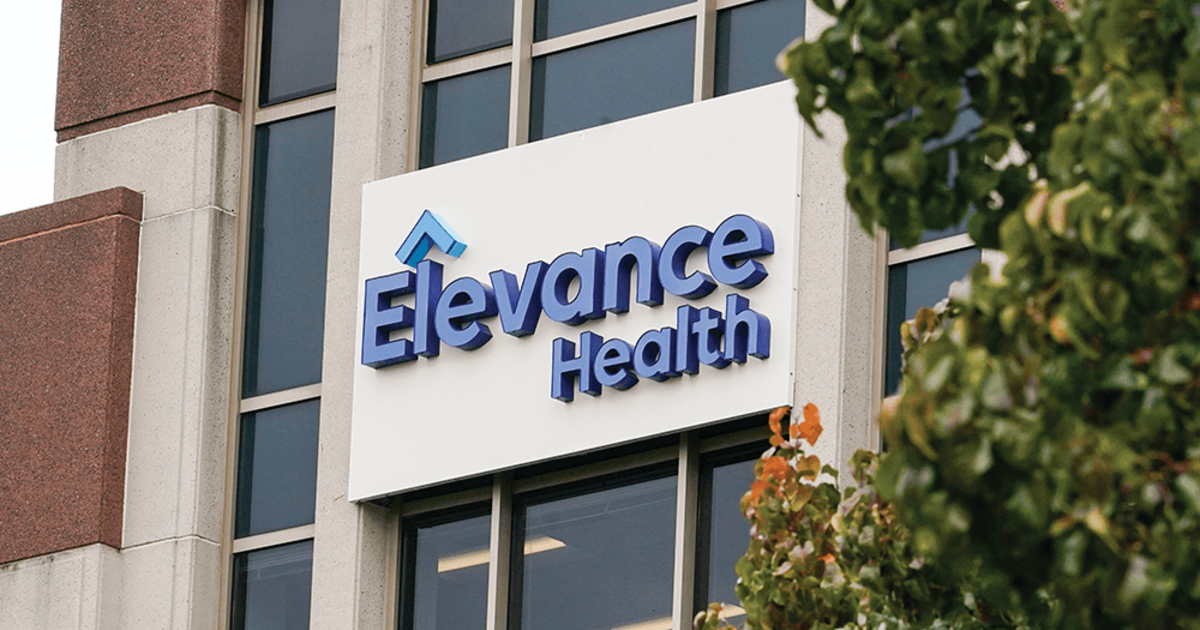Building Communication Access Plans in Healthcare

Fostering Inclusive Care for Deaf and Hard-of-Hearing Patients
Effective communication lies at the heart of providing quality healthcare services. However, for the millions of Americans who are deaf or hard of hearing, communication barriers in healthcare settings can lead to adverse consequences for their health and well-being. To bridge this gap, healthcare providers must proactively develop communication access plans to ensure effective communication with their deaf and hard-of-hearing patients. In this blog post, we will explore the importance of planning for effective communication, the steps involved in developing a communication access plan, and the significance of supporting this diverse patient population.
Population Served by Communication Access Plans
According to the National Institute of Health, approximately 15 percent of American adults, equivalent to 37.5 million individuals, report some level of hearing loss. Among them, nearly 2 million are deaf, with many experiencing late-onset deafness. The communication needs of this population are varied, and without proper support, they may face significant health disparities compared to their hearing counterparts. Limited access to medical care, inadequate assessment, and poorer health outcomes are just some of the consequences of communication barriers faced by deaf and hard-of-hearing individuals.
How To Build Communication Access Plans
Communication access plans are the foundation for providing effective communication to individuals who are deaf or hard of hearing. These plans help healthcare organizations tailor their services to meet the unique communication needs of their patients. By thoughtfully working through the following steps, healthcare providers can ensure that their deaf and hard-of-hearing patients receive equitable and compassionate care. To build a plan you should:
-
Assigning a Disability Rights Advocate: Healthcare organizations can demonstrate their commitment to disability rights and accessibility by designating a disability rights advocate or disability accommodations coordinator. This individual oversees compliance with federal disability rights laws and ensures the provision of necessary auxiliary aids and services or reasonable accommodations.
- Conduct a Needs Assessment: An essential aspect of communication access plans is conducting a needs assessment to understand the specific communication needs of deaf and hard-of-hearing patients. This assessment involves gathering information on language preferences, level of hearing loss, and existing communication aids or services required.
- Address Variation in Communication Needs: Individuals who are deaf or hard of hearing have diverse communication needs due to varying degrees of hearing loss and the use of different assistive devices. Healthcare organizations must consider these variations and tailor their communication solutions accordingly.
- Identify Points of Contact: Healthcare providers should identify the various points of contact where patients are likely to interact with them. These points include appointment scheduling, reception desks, virtual patient visits, examination rooms, pharmacies, post-visit follow-up, test results, and billing. Understanding these interactions helps identify potential barriers and provide tailored communication solutions.
- Provide and Notify Patients about Assistive Services: Healthcare organizations must outline in their communication access plans and to the patient the types of auxiliary aids and services or accommodations they will offer in their communication access plans. Additionally, they should inform patients about the availability of these services at different points of contact.
- Deaf-Blind Community Considerations: Specific accommodations are needed for individuals who are deaf-blind, beyond those provided for the deaf and blind populations. Ensuring awareness of surroundings, providing braille materials, and accommodating low vision needs are essential for effective communication.
- Training Healthcare Staff: Proper training of healthcare staff is critical to ensure they can effectively use auxiliary aids and services to communicate with deaf and hard-of-hearing patients. Training empowers staff to meet the unique communication needs of each individual.
Support your Communication Access Plan with Assistive Services and Technology
Providing assistive communications services and technology can greatly improve your patient's experience and help them feel your practice understands their unique needs. Incorporating TTY (Text Telephone) and interpreting services into communication access plans can significantly address the specific needs of deaf and hard-of-hearing patients.
- TTY Solutions for Healthcare: TTY, also known as a TDD (Telecommunication Device for the Deaf), enables text-based communication over the telephone, allowing patients to interact seamlessly with healthcare providers. By offering TTY services at various points of contact, healthcare organizations ensure that patients who prefer text-based communication can easily communicate their needs.
- Interpreting Services for Healthcare: Professional interpreting services, such as American Sign Language (ASL) interpreters, play a vital role in bridging the communication gap between healthcare providers and patients who use sign language as their primary means of communication. Interpreters ensure clear and accurate communication during medical consultations, examinations, and discussions about treatment options. Their presence enables patients to fully understand medical information and actively participate in their healthcare decisions.
NexTalk's Assistive Technology Improves Patient Care
NexTalk is a provider of communication solutions specifically designed to address the needs of individuals who are deaf, hard of hearing, or have speech disabilities. NexTalk offers a range of services to bridge communication gaps and provide effective communication in various settings, including multiple healthcare settings.
NexTalk TTY, Video Remote Interpreting, and Speech Path (CART) services
Through its video remote interpreting, text-to-VRS, TTY compatibility, mobile accessibility, and emphasis on high-quality, secure communication, NexTalk helps create an inclusive and accessible environment for all patients. By utilizing NexTalk's services, healthcare providers can enhance their communication access plans and ensure effective communication with their deaf and hard-of-hearing patients, ultimately leading to improved patient care and satisfaction.
- TTY For Contact Centers: NexTalk's services allow an appointment scheduler, billing contact center, or test results contact number to be compatible with TTY devices – including TTY enable mobile phones. By adding NexTalk’s SaaS solution to your points-of-call-in individuals who prefer text-based communication can access their platform and interact with healthcare providers seamlessly without the need for a relay operator.
- Video Remote Interpreting (VRI): NexTalk offers VRI services, allowing healthcare providers to connect with qualified sign language interpreters in real time through video conferencing. VRI enables on-demand access to professional interpreters, facilitating clear and accurate communication between healthcare professionals and deaf or hard-of-hearing patients during medical consultations, appointments, at the pharmacy, and in emergency situations.
- SpeechPath For Your Office: NexTalk offers voice-to-text software that allows what is spoken to display directly on a screen. The visualization of language is often a great additional communication aid for deaf and hard-of-hearing patients and can be implemented throughout your office. This is similar to CART services used for meetings,
NexTalk Private, Secure, and Easy to Implement
- Secure and Private Communication: NexTalk emphasizes the importance of secure and private communication in healthcare contexts. The company employs encryption and other security measures to protect patient information and comply with privacy regulations such as HIPAA (Health Insurance Portability and Accountability Act).
- Accuracy Enabled: NexTalk TTY communication allows for direct communication with a patient removing the need for a relay operator, this can improve the accuracy of the information conveyed.
- Mobile Accessibility: NexTalk's communication solutions are available on mobile devices, providing flexibility and convenience for both patients and healthcare professionals. Deaf or hard-of-hearing patients can access interpretation services directly from their smartphones or tablets, allowing them to communicate effectively in various healthcare settings.
- High-Quality Video and Audio: NexTalk prioritizes high-quality video and audio transmission in its services, ensuring clear and reliable communication between all parties involved. This focus on quality is crucial in healthcare settings, where accurate information exchange is essential for proper medical care and decision-making.
Communications Access Plan Results
As healthcare providers, it is important to ensure equitable access to healthcare services for all patients, including those who are deaf or hard of hearing. By developing comprehensive communication access plans and addressing the specific needs of this diverse population, we can foster an inclusive healthcare environment where effective communication leads to improved patient care and better health outcomes. By integrating TTY and interpreting services into your communication access plans, you demonstrate your commitment to providing accessible and inclusive care for all patients. Together, you can create a healthcare system that fosters trust, equity, and improved well-being for everyone.
For additional resources on building effective communication access plans, check out this piece from CMS.



